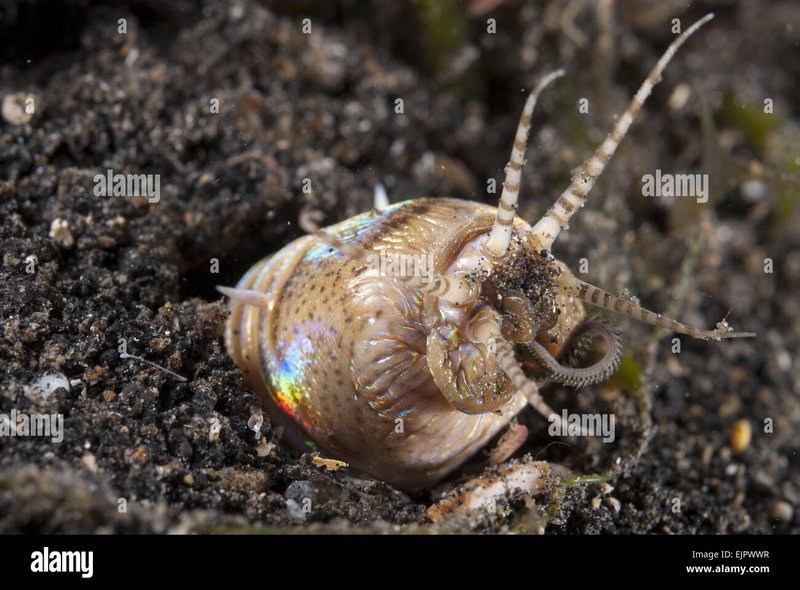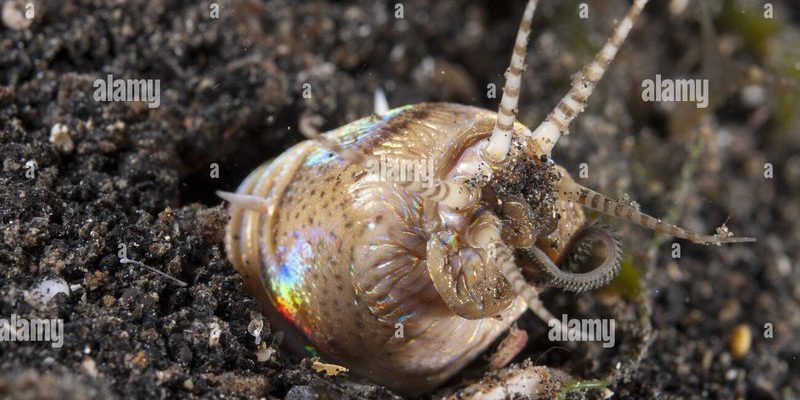
Imagine a long, slender worm, often measuring over three feet, camouflaged among rocks on the ocean floor. Its colorful, bristle-covered body hides a mouth full of sharp teeth and a hunting technique so effective it can catch prey in the blink of an eye. In the wild, these worms have adapted their feeding habits to survive, while in captivity, their diet can differ greatly due to various factors. Here’s the thing: understanding these feeding habits can help ensure that Bobbit worms thrive in both their natural habitat and in aquariums.
Bobbit Worms: A Quick Overview
To really appreciate the feeding habits of Bobbit worms, let’s start with a brief overview of what they are. Bobbit worms belong to the family *Eunicea*, and they’re typically found in tropical and subtropical waters. They’re often mistaken for pieces of dead plant matter because of their exceptional camouflage. You might be wondering why they’re called “Bobbit worms.” The name comes from a famous incident involving a Bobbit worm that was discovered by a marine biologist—its jaw-dropping hunting skills caught everyone’s attention.
In the wild, Bobbit worms can be found burrowed in the sand or hiding among rocks, waiting for unsuspecting prey to pass by. Their fascinating feeding habits play a significant role in their survival. By using their powerful jaws, they can snap up fish, crustaceans, and other soft-bodied animals with amazing speed. This waiting game is a crucial part of their hunting strategy, making them one of the most effective predators in their environment.
Feeding Habits of Bobbit Worms in the Wild
Bobbit worms have a unique feeding style that’s both intriguing and effective. In the wild, they exhibit ambush tactics that involve long, flexible bodies and a mouth full of sharp, needle-like teeth. When they sense vibrations in the water—a signal that prey is nearby—they strike with lightning speed, snatching up their meal in a matter of seconds.
You might be curious about what exactly they eat. Here’s a breakdown of typical prey items for Bobbit worms in their natural habitats:
- Fish: Small fish are a primary food source. Bobbit worms can seize them as they swim too close to their burrow.
- Crustaceans: These include shrimp and crabs, which the worms capture with their quick movements.
- Other Worms: Larger bobbit worms might even prey on smaller worms, showcasing their aggressive feeding strategy.
This method of feeding allows Bobbit worms to thrive in their natural ecosystems. They play an essential role in regulating populations of smaller marine creatures, helping to maintain a balanced environment.
Bobbit Worms in Captivity: A Different Feeding Approach
Now, let’s switch gears and look at how Bobbit worms adapt their feeding habits in captivity. When these worms are kept in aquariums, their diet often changes significantly. Captive environments don’t always offer the same variety of prey they’d find in the wild. As a result, it’s vital for aquarium owners to provide a balanced diet to ensure their worms remain healthy.
In captivity, Bobbit worms may be fed a mix of the following:
- Commercial Fish Food: Pellets or flakes designed for carnivorous fish can serve as a staple diet.
- Frozen Foods: Items like shrimp, bloodworms, or even small fish can be offered to mimic their wild diet.
- Live Food: If available, live food like brine shrimp or small feeder fish can entice their natural hunting instincts.
This shift in diet can be a double-edged sword. While it’s essential to provide nutrients, keeping a close eye on the health of your Bobbit worm is crucial. Overfeeding or offering inappropriate food can lead to issues like water quality problems or health decline.
Feeding Frequency: Wild vs. Captivity
Feeding frequency is another area where Bobbit worms show variation between the wild and captivity. In their natural habitat, these worms are opportunistic feeders. They might eat whenever they catch something, which could be several times a week, depending on prey availability. Their hunting strategy allows them to go for days without eating if food is scarce.
In contrast, aquarium owners often establish a regular feeding schedule for their Bobbit worms. Many keepers suggest offering food about once or twice a week. However, the amount and frequency may vary based on the specific needs of the worm and the overall health of the aquarium ecosystem. Here’s a quick comparison:
- Wild: Feeds whenever prey is available; irregular schedule.
- Captivity: Regular feeding schedule; often 1-2 times a week.
This difference highlights the adaptations Bobbit worms have to make in captivity, and it underscores the importance of understanding their behavior.
Challenges of Feeding Bobbit Worms in Captivity
Feeding Bobbit worms in captivity can come with its challenges. First and foremost, sourcing appropriate food can be a hurdle. While some aquarium shops might carry options, others may not have a wide selection. Additionally, since Bobbit worms are less commonly kept than fish or other invertebrates, finding the right advice can be tricky.
Another challenge is maintaining water quality. Overfeeding a Bobbit worm can lead to leftover food decomposing in the aquarium, which can cause spikes in ammonia and other harmful substances. It’s essential to monitor how much you’re feeding and remove any uneaten food promptly.
Finally, there’s also the matter of ensuring that your Bobbit worm feels secure while hunting. Unlike in the wild, where they have plenty of hiding spots, captivity can expose them to stress. Providing a well-structured environment with plenty of places to burrow and hide can help ease this issue.
When it comes to the feeding habits of Bobbit worms, both the wild and captive environments offer unique challenges and opportunities. In their natural habitat, they’re fierce predators with a varied diet, employing a strategy of ambush hunting that ensures their survival. On the other hand, in captivity, these worms require careful attention to maintain their health and happiness.
If you’re considering keeping a Bobbit worm, or simply find them fascinating, understanding these differences can help foster a better environment for them. From recognizing their natural feeding habits to tailoring their care in your aquarium, you’ll be contributing to the well-being of these incredible marine creatures.
So, the next time you hear about a Bobbit worm, remember the layers of complexity in its feeding habits. They’re not just quirky marine animals; they’re a glimpse into the rich tapestry of life under the sea.

